Lego celebrates their 90th anniversary this year and the Galaxy Explorer is one of the classic sets that Lego have made a re-imagined version of. This new Galaxy explorer is based on the Galaxy explorer from 1979, also known as Space Cruiser And Moonbase. To many AFOLs, the 1979 Galaxy explorer is the most iconic Lego set of all time so it is no wonder that this is one of the two sets that was selected.
The Galaxy Explorer is designed to look like the original as a whole with the important difference that it is 1.5 times bigger and has a more modern design. Meaning that it’s made using modern Lego bricks and building techniques.
It retains the same colours as the original and that is very important to give it the true classic feeling.
The set has 1254 pieces and four Minifigures. The price is 99,99 €/$99,99/£89.99, however the prices in euro differs depending on what country you live in, at least now as I write this. For example, I live in Finland and the price here is 129,95€. Obviously, I’d rather pay 100€ than 130€, but even with the higher price I don’t think I could stop myself from buying it.
For me as an AFOL that lived during the golden age of Classic Lego Space, this set is a dream come true.

Many important details from the original can be found. One nice detail is the white arrow that is built using Lego bricks. When I first started building the part of the ship that would become the arrow I didn’t understand what I was building at first, but when I started to realize it I was surprised. Such a fun way to put that classic white arrow on the build instead of simply having a printed brick there.
The two detachable engines are a very fun part of the ship and to me, they represent the early Lego Space theme in their own way as they made me think of all the really small one-person spacecrafts that were a part of the theme back then.
Take a look at 885 Space Scooter, also from 1979 and you will see what I mean. The engines are also really well designed and they do look very powerful.

The back of the ship can be opened and a ramp can be pulled out and lowered to ground, allowing the Space Rover to roll out. The Rover actually rolls out on it’s own when you lower the ramp. This works really well.
The Lunar Rover is a small vehicle with a design and colors similar to the Lunar rovers and other ground vehicles of the Classic Space era. There is also a sliding airlock door giving access to the rest of the ship. A great detail that adds a bit of realism to the set. Also, this door makes the next part of the ship cozier.
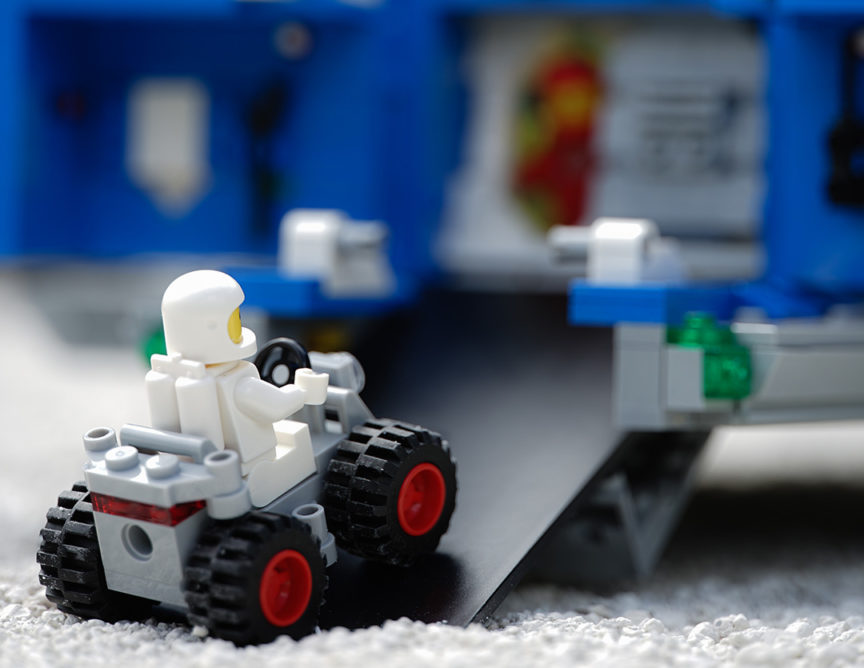

Behind the pressure door we find a room with two beds and some computers. Since there are four astronauts we have to assume they sleep in shifts. The beds have room for the Spacemens air tanks, which is great. The crew never have to take off their spacesuits, very practical.
The print on the computers is in the same style as the Classic Space computers. One of the tiles in the crew compartment has a radar image on it, and if you look very closely at the radar you will see a tiny Blacktron logo.
The Blacktron was a faction of the Space theme that was introduced in 1987. They were the bad guys and before the Blacktron arrived there were no bad guys and the Spacemen would peacefully explore the galaxy, search for minerals and such. So that the Blacktron symbol shows up on the Radar in the Galaxy explorer tells us that the Classic spacemen in this new Galaxy Explorer might not always just explore. They might have to use the two blasters the ship has in the front to chase away some pesky Blacktron raiders.

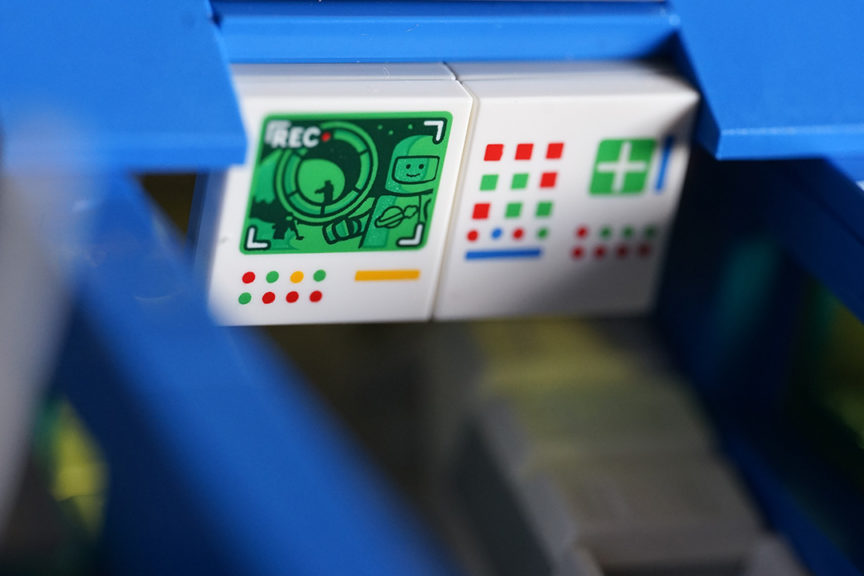
If we move to the next compartment of the spaceship we are in the bridge or cockpit of the ship. This is where the astronauts control the ship. The original Galaxy Explorer only had room for one astronaut in the cockpit but the new ship has room for all four spacemen, what an upgrade!
The computers here are just as cool as in the previous room. One of the computers show a spaceship with the same shape as the Galaxy Explorer seen from above shooting asteroids.
In the upper left corner of screen the number 497 is shown. This has to be a reference to the Atari game Asteroids that just like the original Galaxy Explorer was released in 1979. If you played with Classic Space Lego then the chances are pretty high that you also have played the game Asteroids. This increases the level of nostalgia of this set quite a lot.
But there’s more to this, the number 497 is not a random number showing the score. This is the number that the original spaceship was known by in USA: 497 Galaxy Explorer. Elsewhere it was known as 928 Space Cruiser and Moonbase. So this number is a reference in a reference. I love these kinds of details.
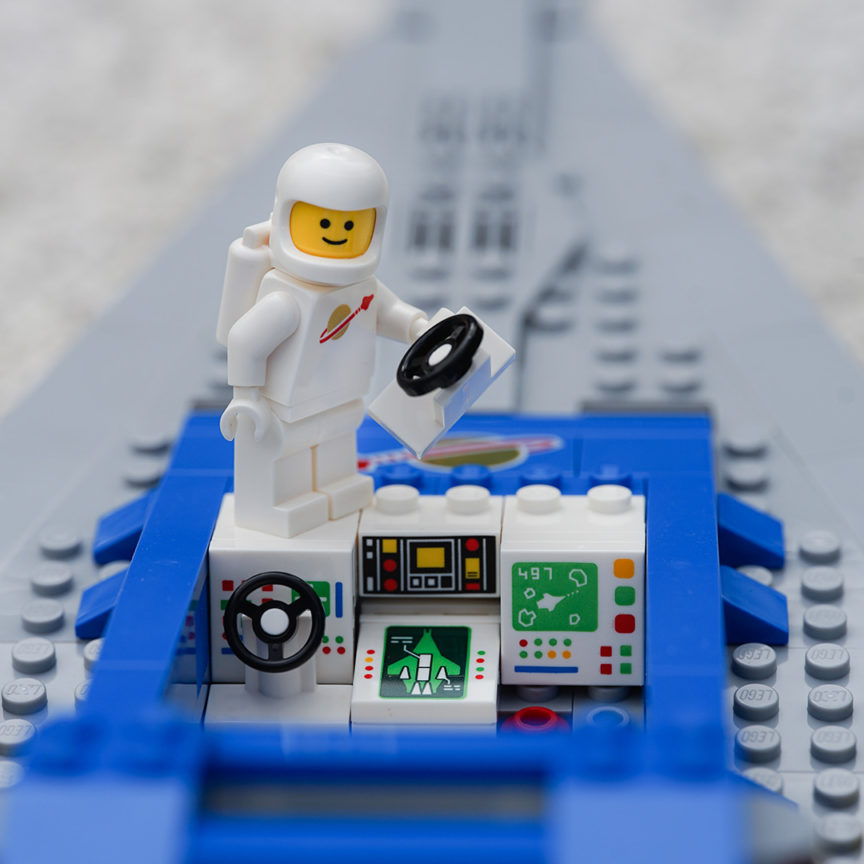
Another upgrade compared to the original spaceship is the retractable landing legs. They look good and they work well. And like the rest of the ship they are sturdy. The ship will stand steady on these.

Minifigures
The ship comes with four Classic Space astronaut Minifigures. Two white and two red, just like in the original Galaxy Explorer from -79. The instruction booklet says they are almost exact copies of the original spacemen.
One difference is that the helmets have been made stronger so they won’t crack easily. This could sometimes be a problem with the helmets of the classic astronauts, especially if you would bite the helmet (I never chewed on my Lego, but I had friends who did this).
The classic astronauts are to me, and probably to many other AFOLs, the most iconic Lego Minifigures of all time.
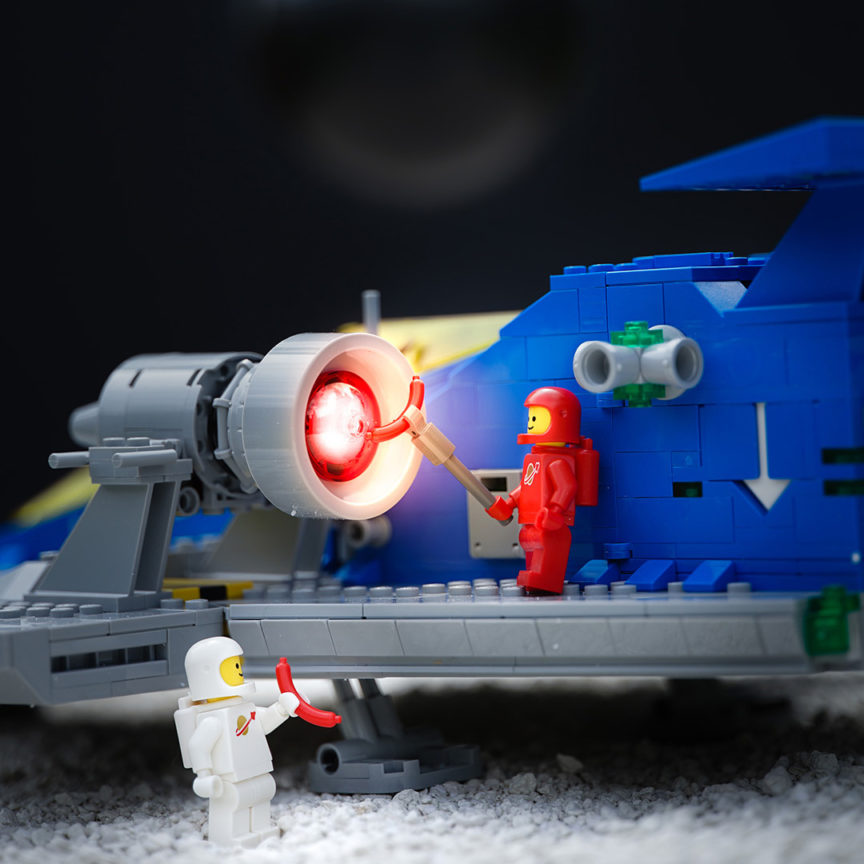
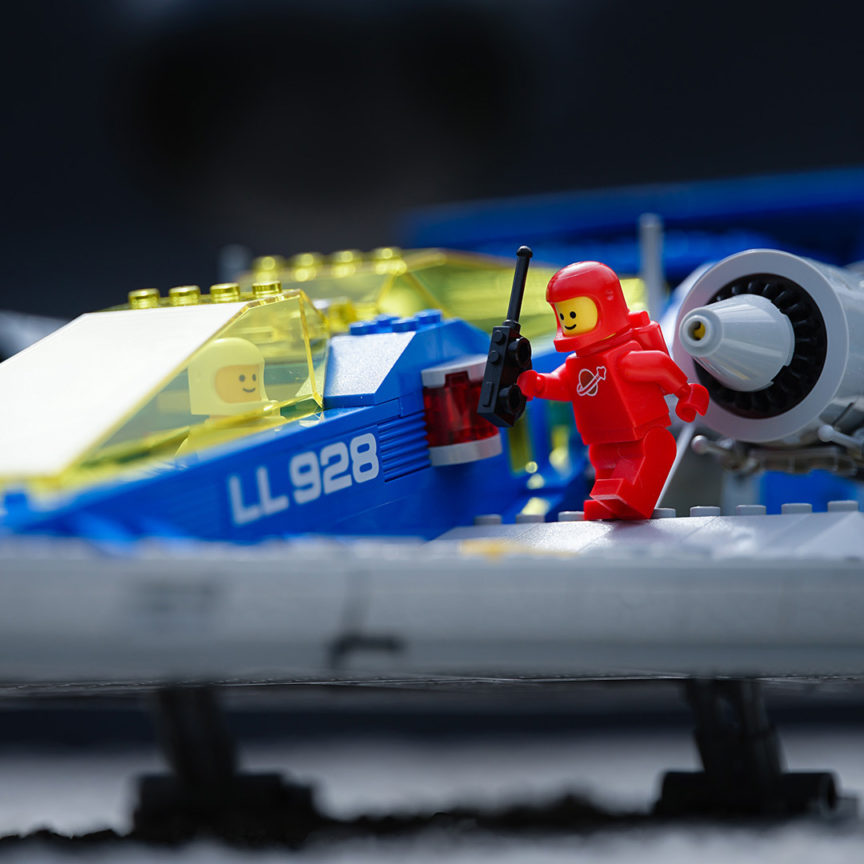
I should also mention the robot that comes with the Galaxy Explorer, or droid as it was called in the Classic Space set 6809 from 1987. It’s a brick-built Lego robot, built exactly as the original.
Michael Psiaki, the designer of the new ship, wanted to add this robot to the new Galaxy Explorer even though there was no robot in the original. And I’m glad he did.
This new Galaxy Explorer doesn’t only represent the Original ship but the entire Classic Space era, and then you need a robot since many of the sets back then had them. It seems the main purpose of this robot on the Galaxy Explorer is to serve Coffee to the astronauts.
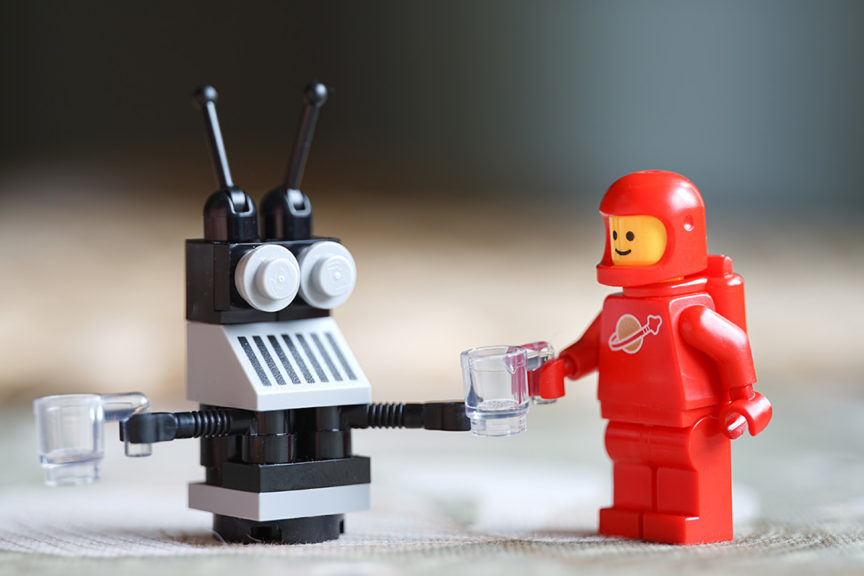
Conclusion
I have nothing but praise for the Galaxy Explorer. It is a dream come true. The ship is very sturdy and heavy. Not once during the many hours I’ve handled it did a piece come off.
All the functions, like the ramp and the landing legs work great. My wife, even though she is not a Lego fan, got a bit nostalgic when she saw the colours of the bricks I had poured out on the table as I was building. The designer has really put a lot of thought into getting all the important details in.
A super cool bonus is that Michael Psiaki has designed two more spacecrafts that can be built using the bricks in the set. These two ships are based on set 924 and 918. The instructions can be found on LEGO.com/buildinginstructions.
I still haven’t decided if I will take the Galaxy Explorer apart to build them or if I will get another Galaxy Explorer so that I can have all three ships at the same time.
Behind the Scenes
I took the pictures outside. I have more experience with outdoor photography and since the Galaxy Explorer is pretty big I need more space to create the scene.
I have a makeshift platform that I’ve made earlier that I poured cat litter on. I’ve used cat litter to simulate the moon’s surface in an earlier project so I knew this would work pretty well.
As a background, I have a large plastic board that I’ve found. Unfortunately, it has some white paint on it but could remove this in photoshop later. I have also hung a plastic ball that I borrowed from my kids. I used that to make the background look more interesting, more space-like.
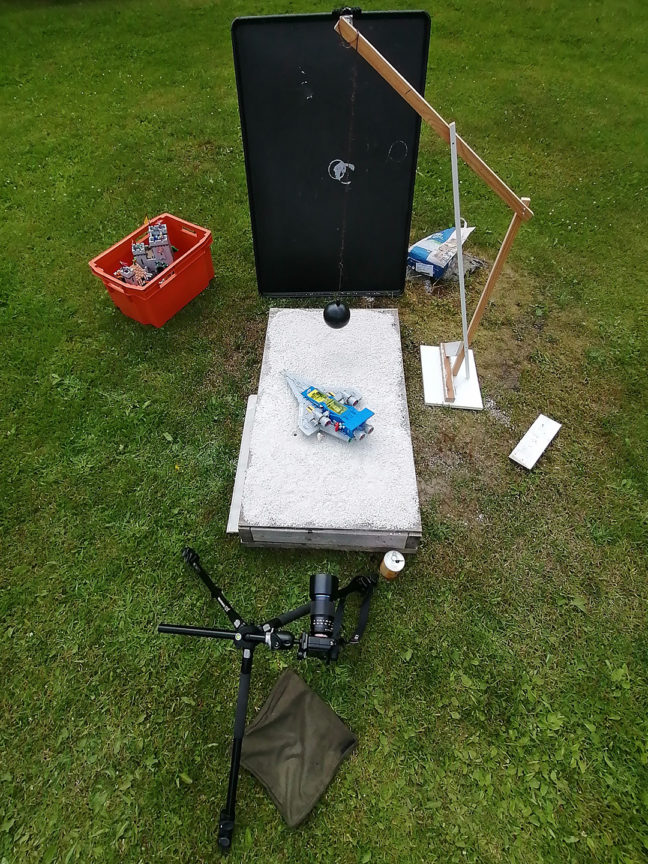
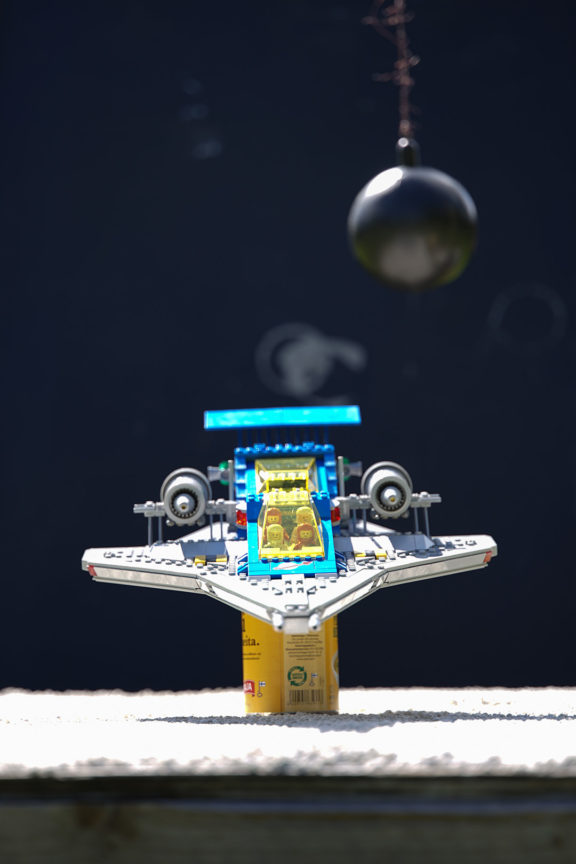
other toy photographers before with great success. Just remember to remove it in photoshop later.

